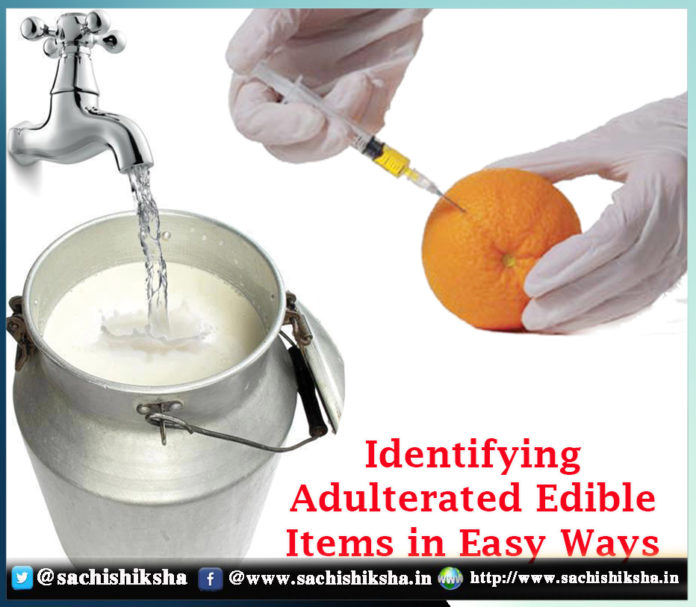 Identifying Adulterated Edible Items in Easy Ways
Identifying Adulterated Edible Items in Easy Ways
The adulterated food items have flooded the markets. We all know consumption of such items would be very harmful for our health as they may result in causing serious diseases.
But the problem is that how to identify those adulterated edible items from the pure ones. There are some simple ways through which purity of food items can be ascertained.
Following are the easy methods to identify adulterated edible items:
l If the colour of Ghee changes after adding tincture, it is adulterated. l If Hing is pure, it would emit sparkling light on being put in fire and generate aromatic smoke. l If honey is pure, it would settle at the bottom of water. It would not dissolve in water. On the other hand, if honey is impure, it would dissolve in water. l Rub chili powder in wet bloating paper.
If the blotting paper turns red, it is impure. l To detect purity of black pepper, put it in water. If it settles down in water, it is pure. Impure black pepper (seeds of papaya), floats in water. l If you want to check purity of milk, put a drop of tincture iodine in it.
If it remains white, it is pure and if the colour turns violet, it is impure. l If honey is pure, it would catch fire immediately on coming in contact with burning cotton.
l The wings of a fly would not stick to honey if it is pure. l Pure honey would not stick to cloth. l Pure salt would dissolve in water. l To check purity of coffee, put it in water. Flakes of the coffee would float in water and would remain as it is for some time. But adulterated coffee would settle down in the water-filled mug. l Original asafetida would melt immediately in water and water would turn whitish.
l Original asafetida is having red tinge while impure ones would have grayish tinge. l Sprinkle tea granules in a wet bloating paper. If it releases colour, it is adulterated. l To check if iron dust is mixed with tea granules, use a magnet. The magnet would extract the iron dust. l If tea dust is adulterated with wooden dust, it would float in water l To check the purity of vanaspati ghee, mix it with sugar and S Hydrochloric Acid. After this, shake it well. If the mixture turns red it is adulterated.
l If you want to know if ghee is mixed with vanaspati ghee, coat an earthen pot/utensil with it. If you find whitish residue, it is impure. l Put a little ghee in a bottle and then put it an utensil filled with water and then put the utensil on stove. When the ghee melts, put some two/three drops of acid. If the colour of ghee does not change, it is pure. But don’t use this particular ghee. l To check if ghee having granules is mixed with potato, take it from the utensil and rub it.
If the granules do not melt and some granules continue to remain, it is impure. l In turmeric, usually yellow colour is used to adulterate it. To check the purity, put little turmeric powder in water and some little hydrochloric acid. If the colour turns violet, it is adulterated. l Put little turmeric powder in a bottle and then pour lemon juice in it. If the colour changes, it is adulterated.
Follow us on Facebook, Twitter, Google+, LinkedIn and Instagram, YouTube to get more updates related to sachi shiksha Spiritual Magazine, articles.



























 Identifying Adulterated Edible Items in Easy Ways
Identifying Adulterated Edible Items in Easy Ways




















